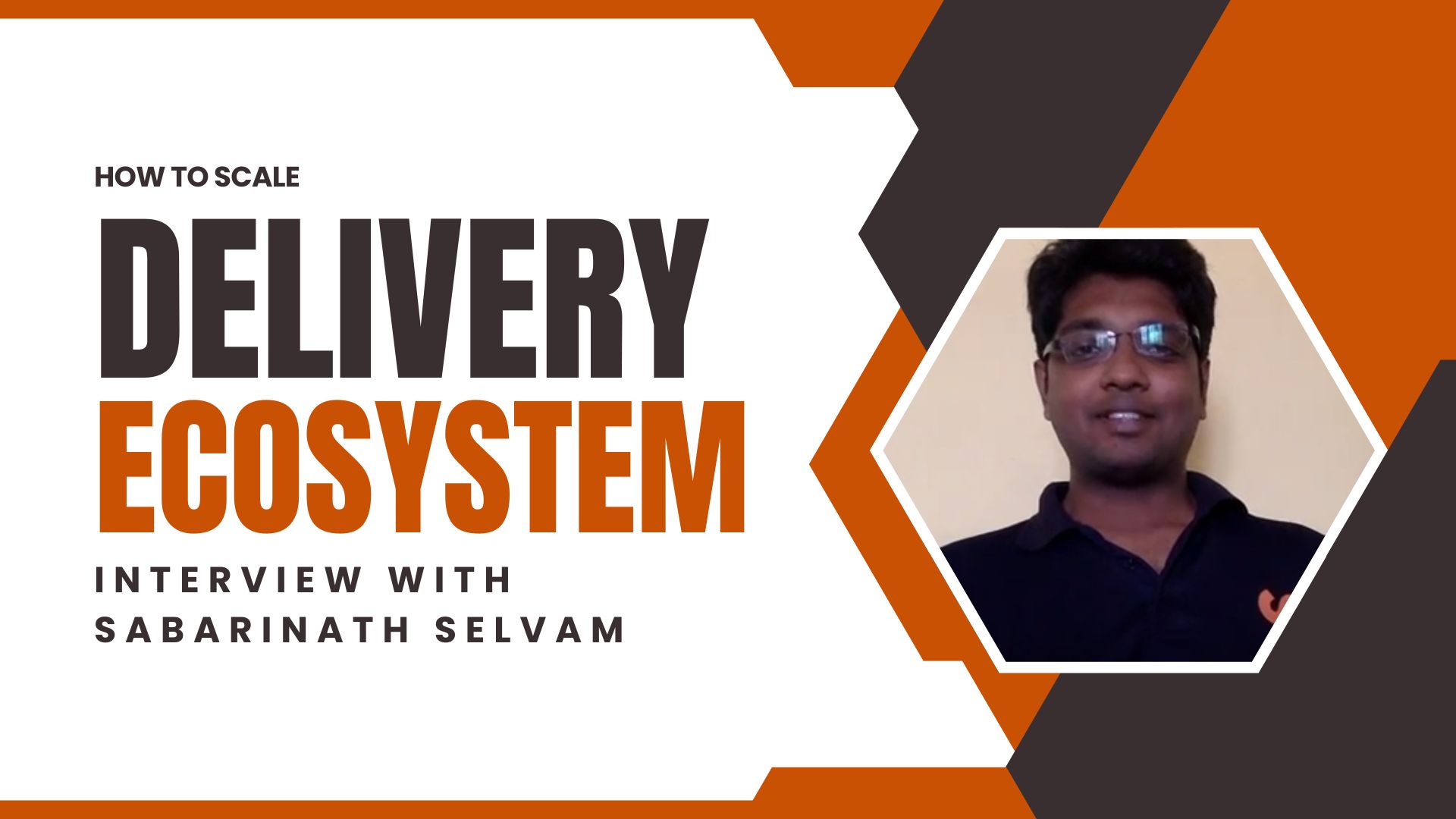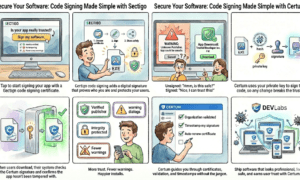Sabarinath is a UK-based product leader with a track record of driving hyper-growth in startups across industries like ed-tech, food-tech, and social networks. He played a key role in transforming Swiggy, India’s leading online food delivery and quick-commerce company, helping it scale to become the largest player in its space. His contributions were instrumental in growing Swiggy’s delivery partner fleet to over 300,000 users, optimizing operations and improving user experience at scale.
In this interview, Sabarinath shares his firsthand experience in scaling Swiggy’s delivery partner ecosystem, discussing the challenges he faced and the innovative approaches he took to drive success. He dives into the power of gamification, behavioral economics, and AI-driven workflows to build high-retention, efficient systems. Whether you’re a product manager, a startup leader, or someone curious about how tech and data can solve real-world operational challenges, this conversation is packed with actionable insights on building scalable, user-centric platforms that fuel hyper-growth.
When you joined Swiggy, what did the company look like, and what were your initial goals?
I joined Swiggy in 2018, at a critical juncture when the company was undergoing the period of rapid expansion. At the time, Swiggy had just secured Series E funding of around $210 million from Naspers and DST Global, cementing its position as a leading food delivery platform in India. However, despite strong funding and traction, Swiggy operated in just eight cities and was in a dire need of scaling. In addition, competition with Zomato and other emerging players was intense.
As part of the delivery partner experience team, my role was to build and optimize user experience flows for delivery partners—the backbone of Swiggy’s operations. Our primary goal was to create a seamless and efficient working experience for them, which would directly impact retention, engagement, and overall operational scalability.
You were tasked with scaling Swiggy’s ecosystem. What was your approach to reach the goal?
To scale Swiggy, we needed to balance three key stakeholders: customers, delivery partners, and restaurant partners. Growth wasn’t just about increasing order volume—we had to ensure a stable supply of engaged delivery partners while maintaining high service quality.
Swiggy’s ecosystem had three major components:
- Customer Experience – Seamless order placement, reliable deliveries, and a superior app experience to drive demand.
- Delivery Partner Experience – A well-supported, engaged, and reliable fleet to ensure efficient order fulfillment.
- Restaurant Partner Experience – Optimized workflows to help restaurants process and hand off orders with minimal friction.
What were the biggest challenges you faced initially?
When I began working, one of the most pressing challenges was driver partner retention. High attrition rates translated into increased acquisition costs, fulfillment inefficiencies, and operational disruptions. The key reasons for churn included:
- Frustrating support experience – Delivery partners had a tough time dealing with payment issues, navigation troubles, and order mix-ups. Getting help was slow and often a hassle, making the whole process frustrating.
- No clear insights into partner struggles – Swiggy had nailed the customer experience, but when it came to delivery partners, there wasn’t enough data to understand why so many were quitting.
- Messy operations – Signing up, getting paid, and fixing problems weren’t as smooth as they should’ve been, causing unnecessary headaches for delivery partners.
One of the biggest challenges in scaling Swiggy was maintaining a stable and sustainable supply of delivery partners. High churn rates led to:
- Increased acquisition costs for new partners.
- Poor order fulfillment rates and customer dissatisfaction.
- Loss of experienced delivery partners, who were more efficient and better at handling peak-hour demand.
How did you approach these challenges, and what were the results?
Retention was critical for scaling. Experienced delivery partners completed orders faster, provided better customer experiences, and earned more over time. However, a “leaky bucket” problem—where new partners joined but quickly dropped off—made expansion costly.
I focused on two core initiatives:
- First, automating support—we built self-serve tools so partners could fix common issues like payment disputes, order problems, and navigation glitches without having to call customer service. This made things faster and smoother for them while also cutting down support costs.
- Second, getting hands-on with user research—I spent time talking to delivery partners through focus groups and one-on-one chats to really understand their struggles. I even went on deliveries myself to experience the challenges firsthand, from confusing routes to long restaurant wait times. These insights helped us focus on the right fixes, making Swiggy’s system more efficient and partner-friendly.
These early fixes made a big difference—partners stuck around longer, engagement improved, and we built a solid base for things like gamification, loyalty programs, and smarter workflows. By doubling down on automation, scalability, and actually listening to delivery partners, we cut churn, boosted satisfaction, and set up systems that could keep up with Swiggy’s crazy-fast expansion.
What solutions did you implement to improve retention and scale Swiggy’s delivery partner network?
We focused on building smart, scalable solutions to make life easier for delivery partners while keeping operations efficient.
- Payment Transparency & Gamification – We introduced real-time earnings tracking and clear payout rules, so partners always knew what they were making. To keep things engaging, we used subtle nudges to encourage better earning habits, like bonuses for peak hours and streaks. Gamifying the process made incentives easier to understand and more rewarding.
- Automated & Scalable Support – We built self-serve tools for common payment disputes, cutting down wait times and frustration. Instant answers for frequently asked questions made problem-solving quick and hassle-free. The result? A faster, more efficient support system that could handle thousands of queries without breaking a sweat.
By prioritizing automation, gamification, and data-driven insights, we improved retention, reduced hiring costs, and supported Swiggy’s expansion from 8 to 500+ cities.
Retention is crucial in fleet management. How did initiatives like the driver loyalty program and payment transparency improve retention?
Swiggy’s incentive system had two parts: a fixed per-order fee and a variable component with bonuses for things like peak-hour deliveries and completing streaks. The problem? Many delivery partners didn’t fully understand how to maximize their earnings, and our data showed that 15-20% of them could have earned at least 20% more with better visibility into how incentives worked.
To fix this, we rolled out two key initiatives:
- Payment Transparency & Gamification (Incentive Progress Bar) – We added real-time earnings tracking so partners could see exactly how much they’d earned and how close they were to hitting bonus milestones. Goal-based visuals made incentives more transparent, and smart nudges encouraged partners to complete streaks and maximize their payouts. The result? More incentives completed, less frustration, and better engagement overall.
- Swiggy SMILES: The Driver Loyalty Program – To reward high-performing partners, we introduced a tiered system with real benefits like access to financial services (loans, insurance), priority access to high-demand slots, and exclusive rewards. The impact? Churn dropped by 10-15%, more first-time drivers stuck around long-term, and gig workers got better financial security.
Looking back, what key lessons from Swiggy continue to influence your work today?
My biggest takeaway is that scalability and user engagement go hand in hand. Whether at Swiggy or in my current role, success comes from:
- Deep user research – Understanding pain points before designing solutions.
- Data-driven decision-making – Using insights to prioritize high-impact interventions.
- Automation & gamification – Creating seamless, self-sustaining engagement loops.
At Swiggy, these strategies helped scale operations from 8 to 500+ cities. Today, I apply the same principles to building scalable, user-centric platforms that drive long-term engagement and growth.































